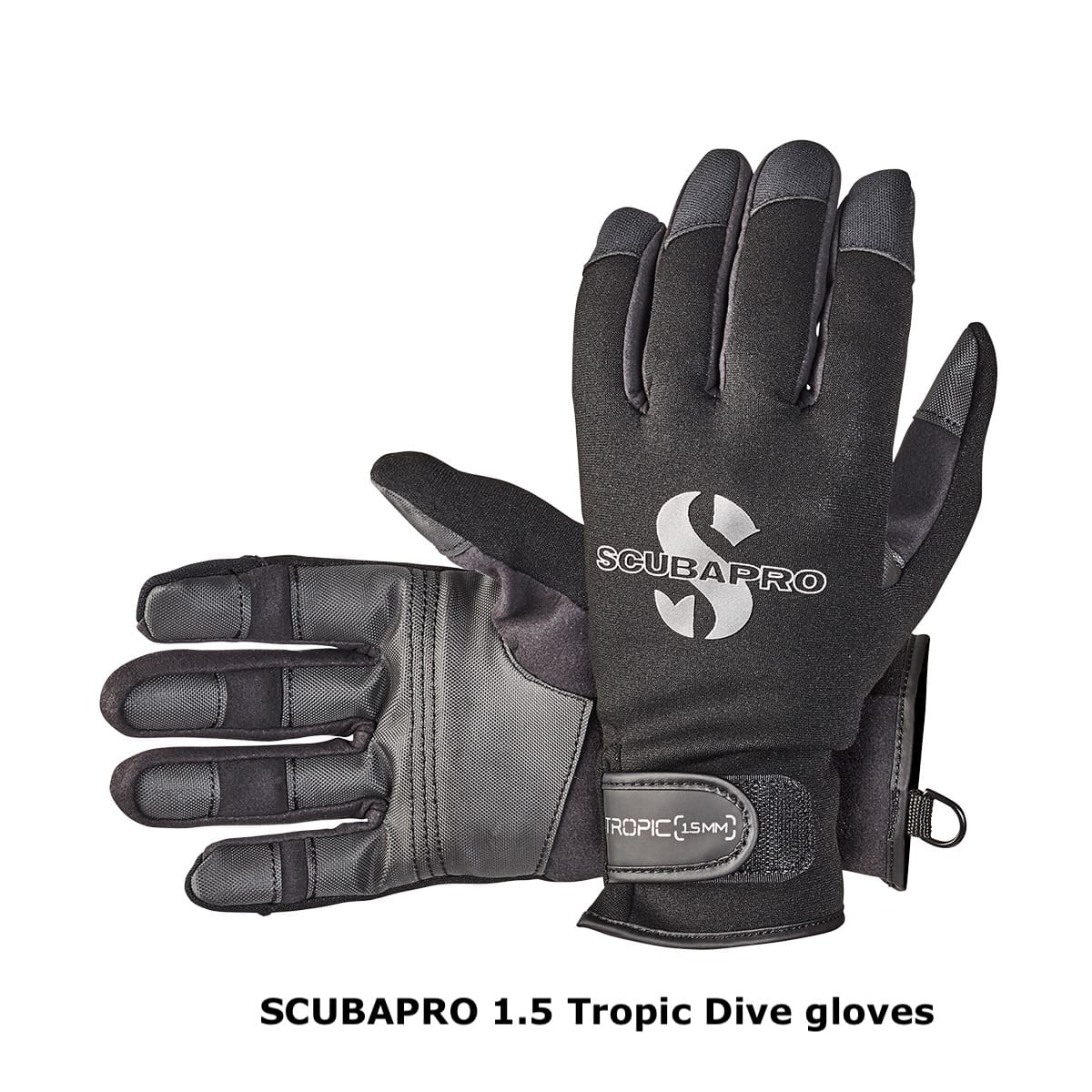
Having the right pair of gloves will make your life so much better when you are working in the water. Whether you are doing a two-hour dive in Norway or you are on a zodiac for a long-range OTB. The right pair of gloves will depend on what you are doing, for how long you are doing it, and the water temperature/ weather. If you need to use your hands a lot during a dive like pushing button on a Navigation board or be able to use your hand right after the dive, like climbing a ladder, shooting a gun. Your tolerance to cold will be the main factors to take into account when choosing the thickness of the gloves. The colder the water, the thicker you will need to go.
1-3mm: water between 60- 75 ° F (16-24 ° C)
5-7mm: water between 45-60° F (8-16 ° C)
Here are the two main things to think about when choosing a pair of gloves for military use.
• Freedom of movement with a minimum thickness that allows you the thermal comfort you will need.
• What is on the palm and fingers? A glove that can be used to grab and hold medal and plastic.
When you are trying them on try and grab stuff around the store.

Dive gloves come in a variety of thickness levels between 0.5mm and 7mm. A good pair of 1.5mm Tropical gloves that have a leather palm is a good start. Some Tactical gear companies are making gloves designed for being in a wet environment that are also good for diving. The WETWORX gloves from S&S Precision come in two styles. One is thinner for warmer water and one is a little thinker (2mm) for cold. I know they have put a lot of work into them and they are nice gloves. As more units get back into the water, I am hoping you can get more companies like S&S that will make gear for use in the water. That said S&S makes all their stuff so it can be used in the water as they come from a water background. I like gloves that can hold on to medal like if you have to climb a caving ladder or hold onto a gun. Being able to hold plastic like a navigation board or buckles. Some gloves have small plastic beads that are not the best for working in the water. It is hard to find a good pair of thick dive gloves that meet the above requirements. If you have to be on a boat or mostly about the water you can get a pair of dive gloves that are a couple sizes bigger, then you usually would wear and put wool gloves on as a base layer. Wool even when wet, will still hold heat in and the dive gloves will help keep your hands warm and dry. You can also bring a thinner set of gloves like 1.5mm with you and change them out a couple of minutes before you hit the target. The other thing you can try with a thinker pair of gloves is putting a set of gardening gloves on over them.

When choosing the right glove, they should fit well enough to avoid water circulation inside as much as possible this will help keep the heat in also. They should not be so tight that it will cut off circulation to your hands. The thicker the gloves, the more insulated you have, but the tradeoff is less mobility. It will be difficult to manipulate the equipment and also to done and doff them. Choose the gloves that you think will protect you enough for the type of water in which you will perform most dives. If you are diving a semi-dry suit, choose gloves that don’t have a zipper or Velcro. It will make it easier to place the glove in the most sealed way possible between the inner and outer layers of the suit. You will want them to fit close to your wrist to reduce the bulge that can happen if there is too much material between your sleeves and gloves. If you don’t do this right just moving your hands will let water in.
The material the gloves are made of should align with your intended purpose.
• Kevlar: This material is known for its elasticity and strength. It increases the durability of gloves by avoiding premature deterioration.
• Neoprene: This is the most common type of material used for dive gloves because it’s flexible and mainly designed for use in the water.
• Dyneema: It is an ultra-abrasion resistant, strong material. It is suitable for working around piers and ship bottoms. Dyneema isn’t designed for warm, but it will protect your hands,
• Amara is synthetic leather that is usually used on the palm of a lot of dive gloves. It increases your grip. Most tropical dive gloves palms use Amara
Dive Gloves Maintenance Tips
Treat dive gloves like you treat anything you want to last. You should care for gloves like you do your wetsuit. They should soaked in fresh water after each dive. You want to force the salt out. Do not put them in the washing machine or use detergents to clean your wetsuits or gloves. Allow them to dry in a ventilated place until completely dry. Textile gloves, take longer to dry. Do not dry them in the sun, as with all neoprene it will cause it to age faster.

